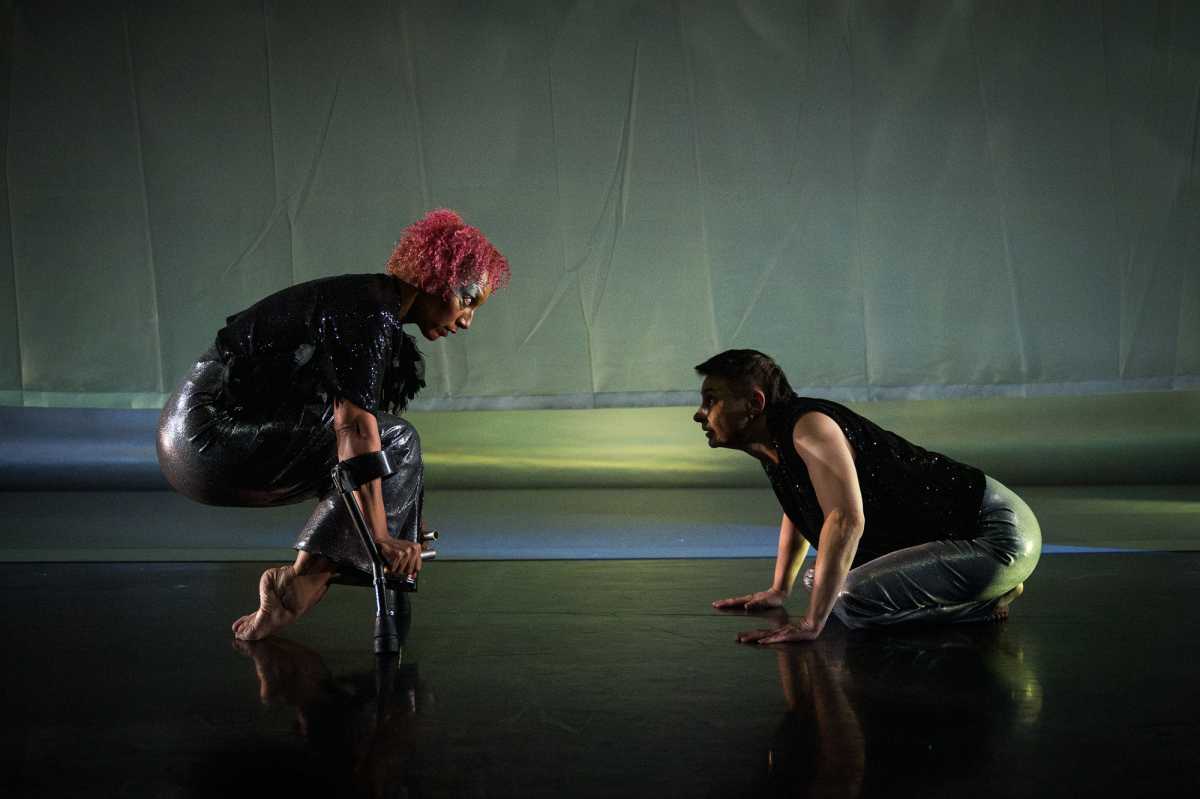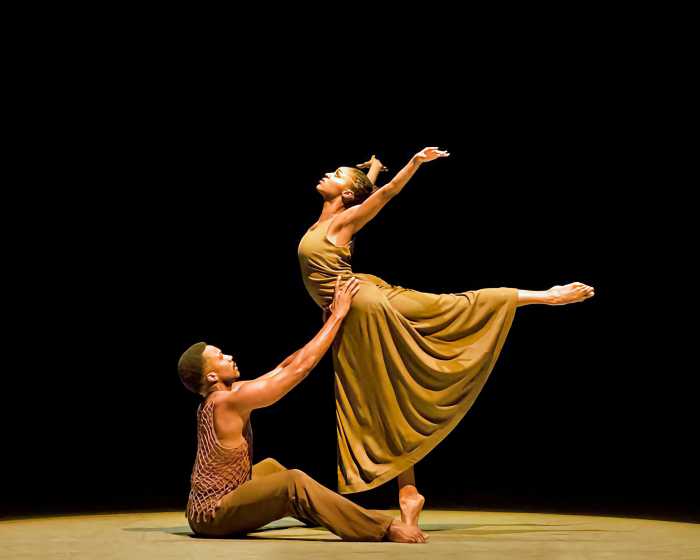From Oct. 9-11, Kinetic Light Dance Company (KLDC) performed its new work, The Next T.i.M.es, at New York Live Arts (NYLA), a venue that brings people together by hosting performances and classes for dance and theater.
According to its website, NYLA is a place that has “an unequivocal commitment to supporting the creative identities of people living together in a creative community,” and also provides necessary resources to diverse artists at every stage of their careers.
KLDC Founder and Artistic Director Alice Sheppard, a Black woman, shared more about the concept behind The Next T.i.M.es and what it was like working with the dancers, including Laurel Lawson (they/them), Kayla Hamilton, and Tatiana Cholewa, whom she described as dream collaborators.
“The Next TiMes imagines a time in the near future, it takes us to a disability-centered universe. As performers, we discover this new place and each other, and we establish, deepen, and strengthen relationships. We call this work a ‘disability arts experience’ vs just a dance show – it encompasses dance, music, visual design, artistic access, and audience experience,” Sheppard said.
On working with Lawson, Hamilton, and Cholewa, Sheppard added, “When we all take the stage together, I really feel like we are on fire and that we are making something unique and extraordinarily beautiful.”
The Kinetic Light team has been working on this work for five years now, since the early days of the COVID-19 pandemic, with many collaborators, and Sheppard is excited to see where it goes next.
For any Kinetic Light work, Sheppard wants audiences to be immersed in disability-centered culture and art, and she welcomes any reaction they have. “Art is deeply personal and unpredictable. We always want Kinetic Light audiences to feel welcomed and cared for,” she added.
In addition, with its approach to artistically and aesthetically equitable access, KLDC strives for its audiences to feel centered, seen, appreciated, and to have agency and choice when it comes to access, which Sheppard sees as a way to help those in the disability community who watch the performance to feel empowered.
Some things that KLDC offers to accomplish this include “multitrack rich spatial audio description through our Audimance app, haptic (vibrational) experience, artistic CART for music and sound, and practices like a curated tactile display, quiet rooms, sensory kits, Access Doulas, ASL interpreters for lobby chat and announcements, and more,” she explained.
Additionally, Sheppard wants the disability community to know that this work belongs to them. It is an integral part of our history and culture. “I want audiences to know that disabled people are makers, performers, artists, technicians, and designers and that our creative histories matter,” she continued.
For Lawson, it’s a unique and memorable experience to be involved in so many aspects of a production.
“In addition to choreography and performance, I’m also the production designer for this work – which includes costume, props, and set as well as working with our projection designers to bring concepts and story to life – and I lead our work in access technology, which includes both the haptics and audio description systems and the content we create for them,” Lawson stated.
At Kinetic Light, a majority of the company’s collaborators and team members are individuals with disabilities, including performers, lighting designers, administrative staff, production team members, access technology developers, and others. According to Lawson, “This is how we work every day. It has been a particular treat to have Kayla and Tati join us for this work. Their collaboration in the studio and onstage has deepened and impacted our work.”
People with disabilities have always danced, created, designed, and performed, and at KLDC, the team creates experiences and art that center on and explore disability culture and perspective.
On the impact of the performance of this new work, Lawson shared, “We create radically accessible spaces and work, and share our knowledge and approach. I know this has an indelible impact on our community, as a place of artistic representation, as well as the wider performing arts, design, and tech communities.”
Across the many facets of the work and practice at KLDC, Lawson feels nowhere near comfortable discussing legacy. However, Lawson knows they “no longer need to be the inspiration for younger disabled people. They have choices; they don’t need to fight the same battles I did to get here.”
Those who want to support KLDC can follow the company on Instagram here: https://www.instagram.com/kineticlightdance/, and on Facebook here: https://www.facebook.com/KineticLight.
To stay updated on their work, interested individuals can subscribe to the company’s email list here: https://kineticlight.us12.list-manage.com/subscribe?u=9f4c8d7fc9f853556760d6c95&id=e0b4a28ffd.























